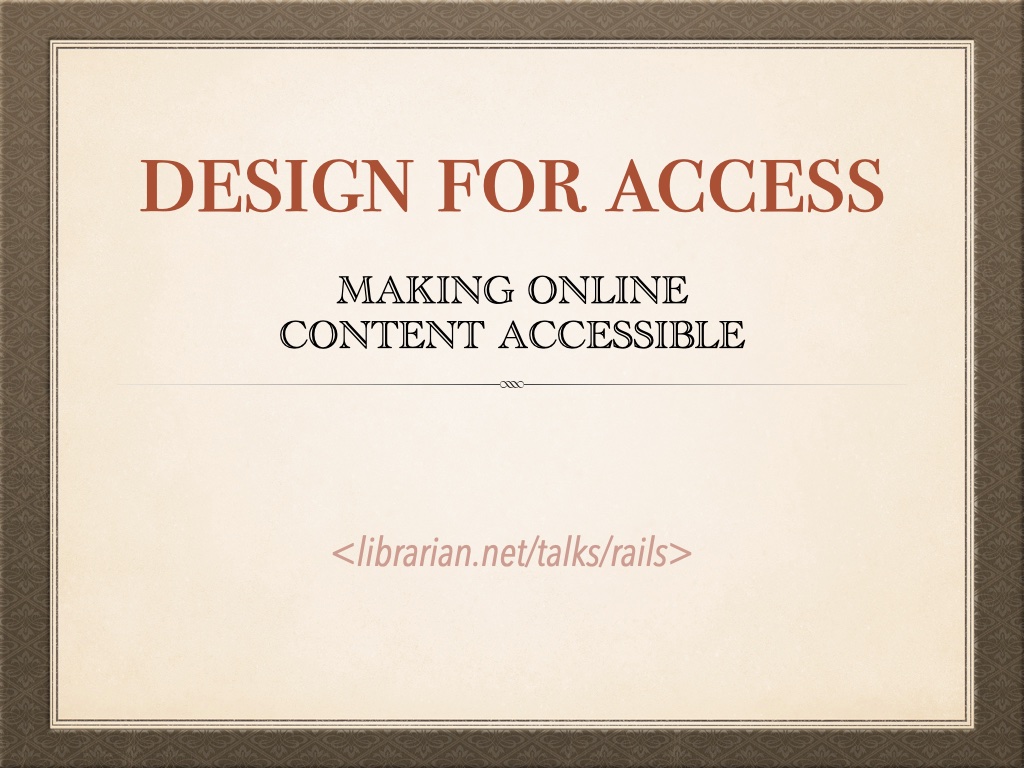
Hello, thanks for having me. Here's a URL where you can find the notes and slides for my talk. I'll be touching on a lot of things and I'm aware they won't all be useful or relevant to everyone. If you want to learn more about a specific thing, you'll find a link on the list.
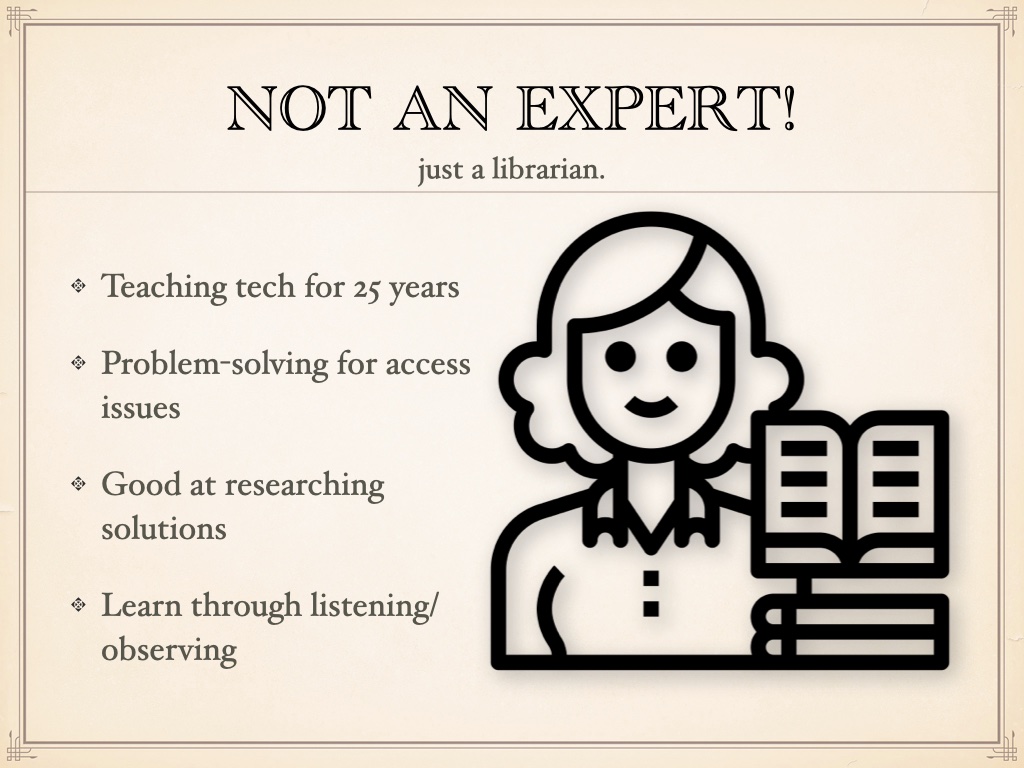
I'm Jessamyn West and I've been a technology educator in library settings for 25 years. I tend to talk about what I know which means not a lot of Tiktok in this presentation though I have been learning how to use some of their tools. My vision is good but not improving, my hearing is okay but I have some auditory issues, my fine motor skills are pretty good. I manage a lot of anxiety. There's a place for people of all levels of ability in accessibility work but it's also important that we listen to experts.
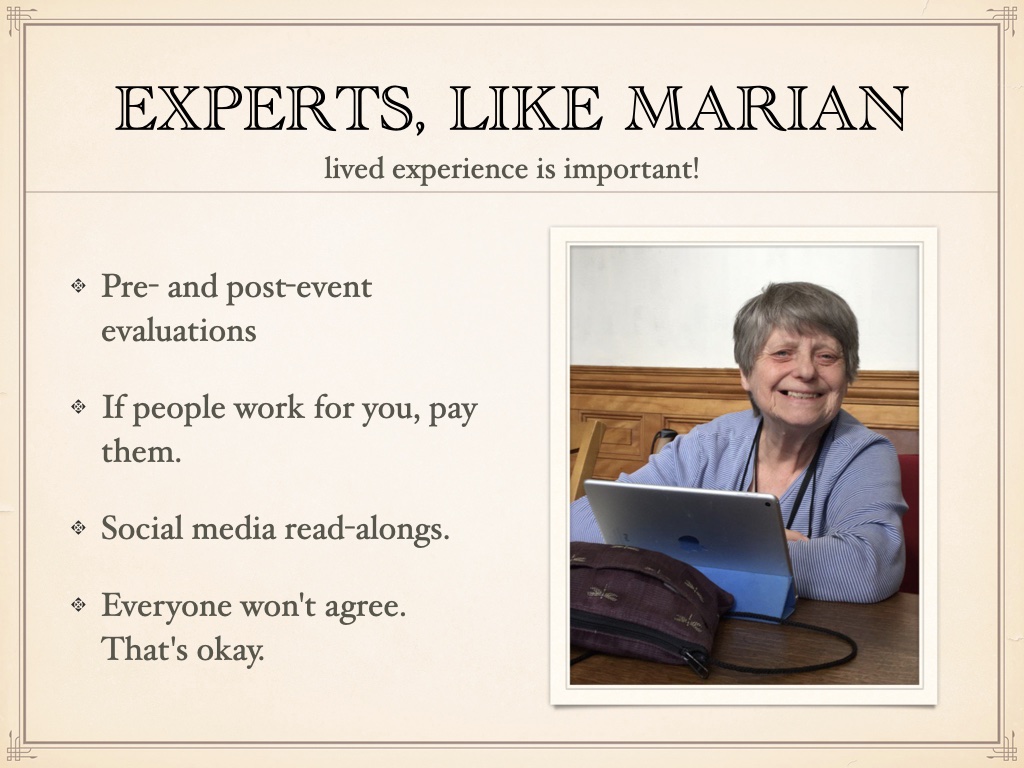
And in this case, experts are people with lived experience. This is my friend Marian. She is deaf, or deaf enough to need two powerful hearing aids. She is retired but is spending her retirement time harassing people to make things more accessible for hearing impaired people, like getting captions on the library Zoom, or open captions at the movie theater. She's good company. It's really important to listen to the communities of people who you are trying to improve access for. They won't always agree on what to do, but they can give you feedback on how they experience things. And if they're helping you do your work, find a way to compensate them for their time and efforts.
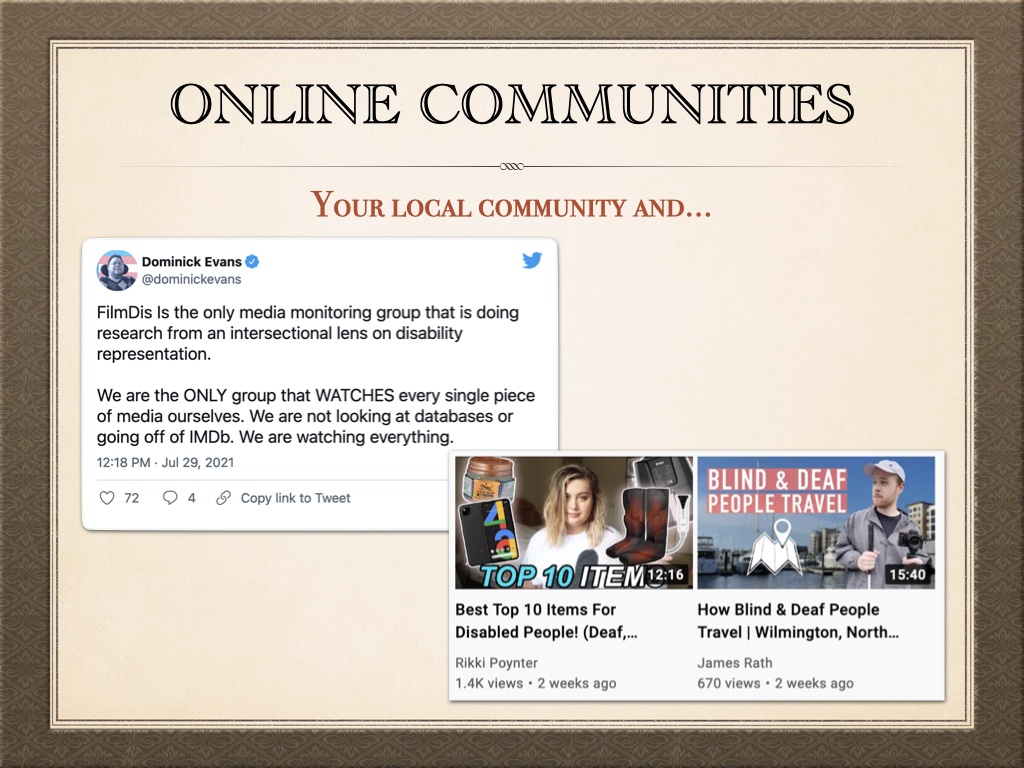
"Nothing about us without us" is a political slogan that the disability rights movement used around the time the ADA was being discussed, debated and finally passed in 1990. 1990!! If you haven't yet made inroads with disability communities within your community, you can also acquaint yourself with communities online. Dominick and their FilmDis discussions are one way I pay attention to representations of disabled people in mainstream media. Recommended. This is one example, there are many. I also follow Rikki and James on YouTube as well as Zach Anner and The Tommy Edison experience (tho not updated too recently. (links on the page). Vilissa Thompson is another good Twitter follow. Once you find someone you like, see who they follow (and it should go without saying, don't put them on a list like Disability Twitter, no one wants that) It's worth understanding that there are many disability communities, they're not monolithic.
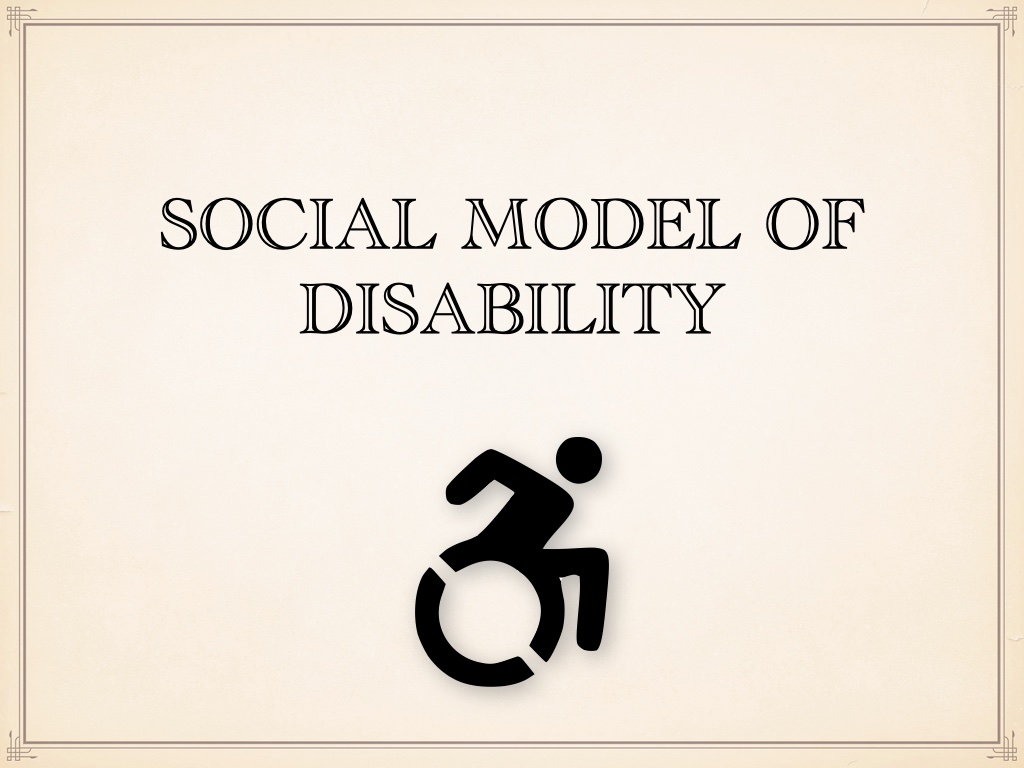
A few words about the social model of disability.
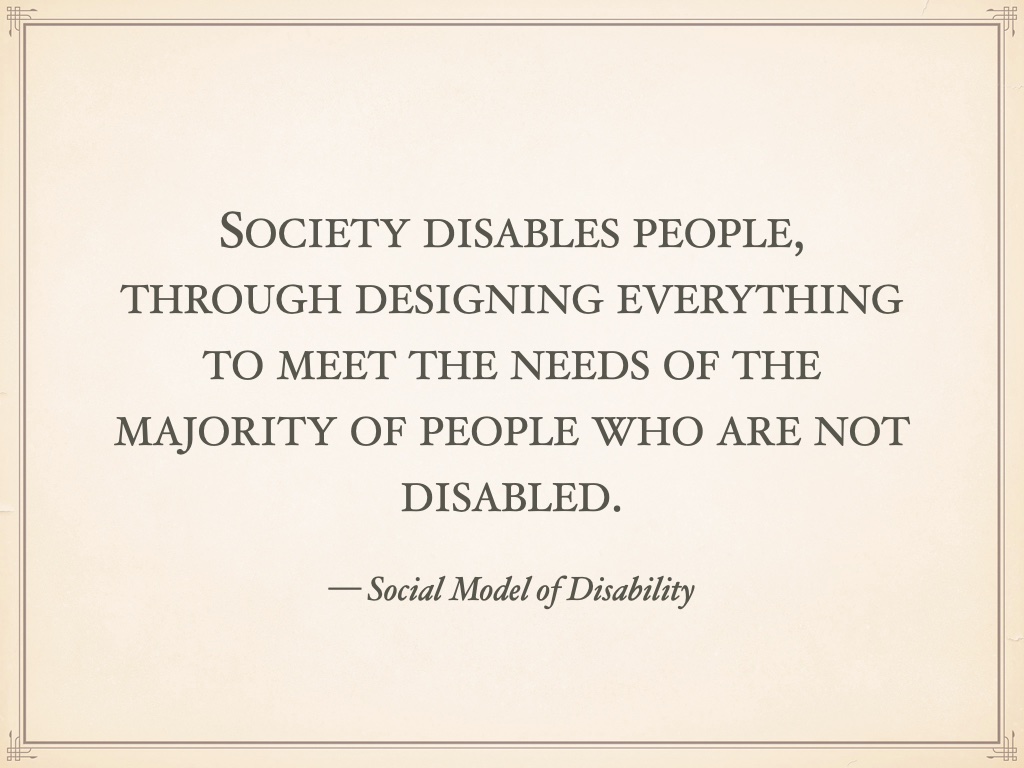
The old model of disability was, briefly put: disabled people had medical problems, so these problems would have medical solutions so that people with disabilities could "fit in" or otherwise access a world that was built primarily for able-bodied people, ergo the disabled person is the problem to be solved. The social model identifies society as the cause of disability including attitudes of people, physical barriers made by people, and information/communication barriers. People with impairments (visual, cognitive, auditory, others) become disabled by society; they are fine and there is nothing wrong with them needing fixing. I'll be talking about communication barriers but it's worth understanding them as part of a larger issue of inclusion.
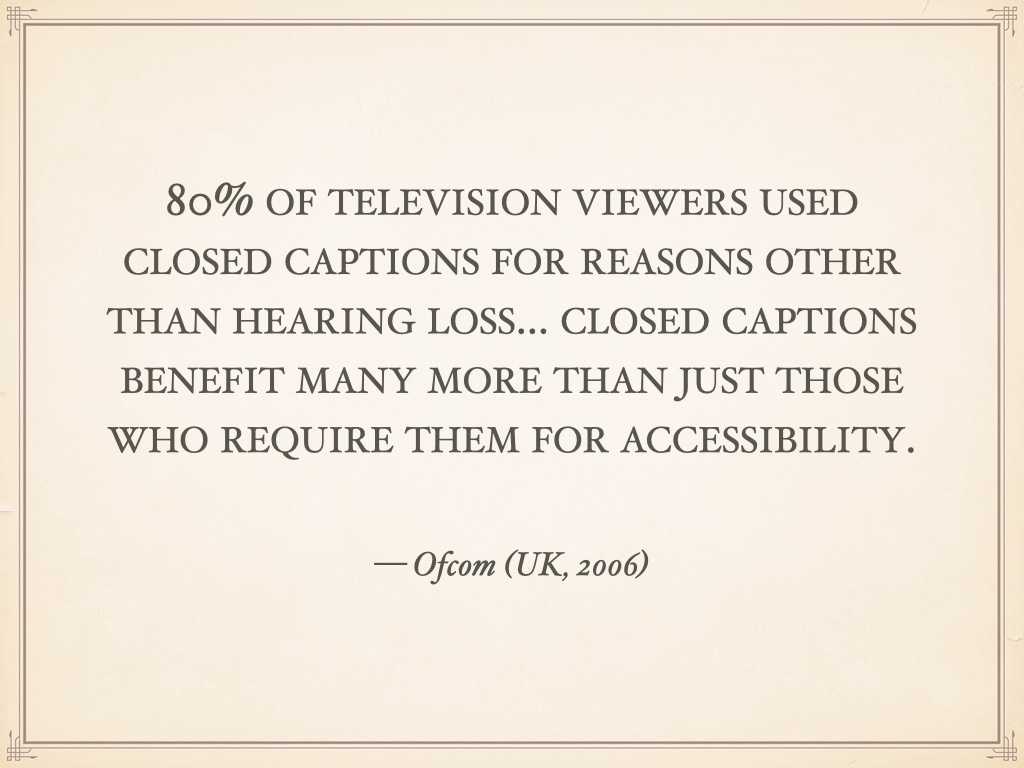
Looking at design and access issues as helping wide swaths of people can sometimes help with buy-in. The classic example is that curb cuts built with wheelchair users in mind can also be helpful for people with baby strollers, or people who have difficulty navigating steps. Similarly captions help lots of kinds of people. How do you know captions are taking off? When you see marketers using them in their Instagram ads/reels. People are using social media with the sound off but you still want to sell them things. Me, I like having the captions on so I can crunch my food loudly or listen to my partner talking next to me without losing the plot.
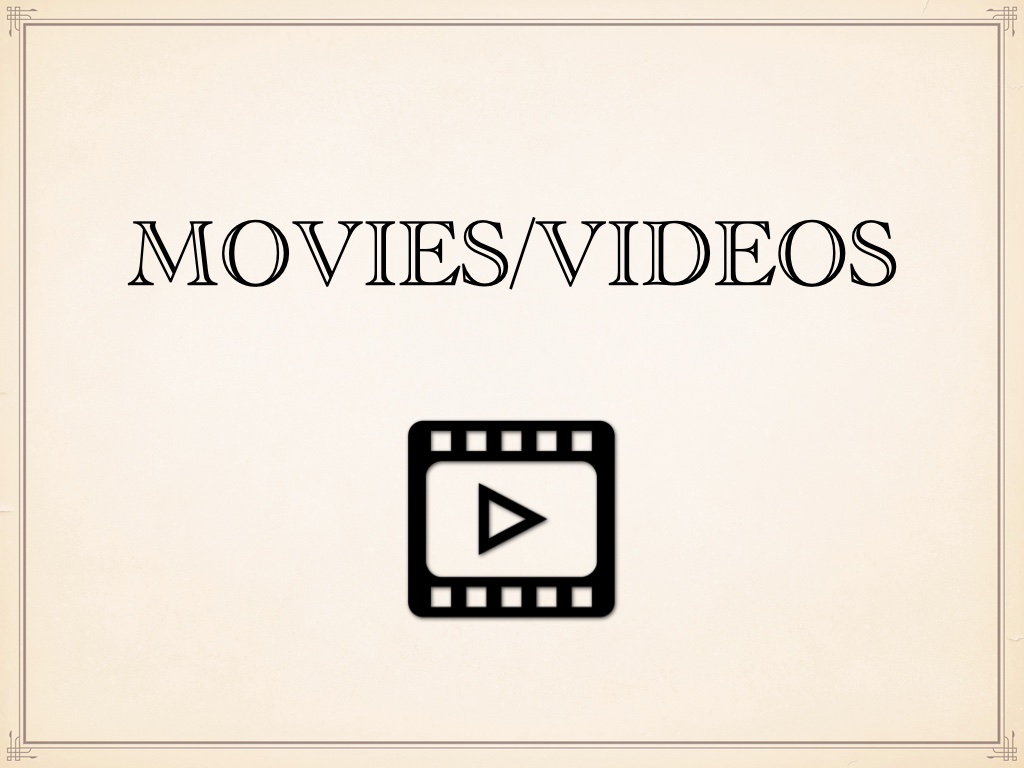
I'm going to talk about accessibility in a few different areas, starting with some tools for captioning and subtitling.
![Title: Captions vs Subtitles. Image of a man playing guitar with the caption 'singing like' and then in brackets [music]. Bulleted list: Captions (open or closed) assume the viewers can't hear. They are a transcription, with descriptive text. Subtitles assume the viewer doesn't speak the language. They are a translation.](images/images.009.jpg)
One vocabulary note... (this is my friend Phil playing guitar and you can see the caption where he's just playing music). Captions stand-in for the audio in a video. Open captions are "always on" attached directly to the video file. Closed captions are uploaded separately, can be formatted, turned on and off. Subtitles are a translation of the audio in a video. Tools that do EACH of these things can be helpful but the words are not really interchangeable in all circumstances.
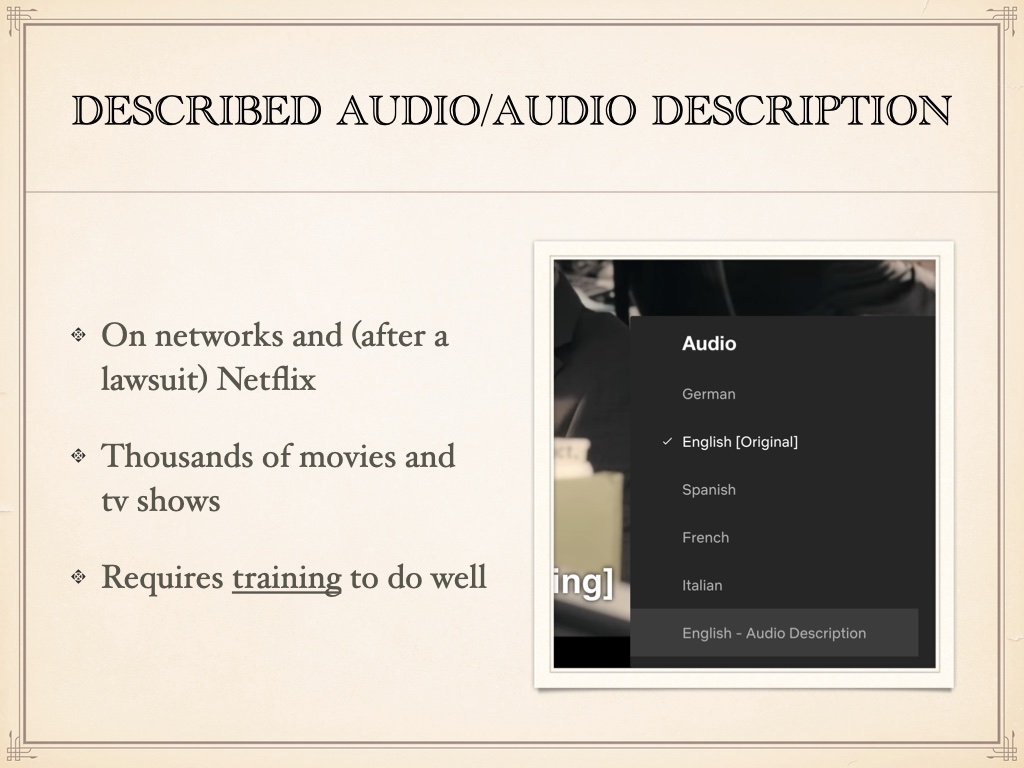
There is also described audio which is a secondary track added to visual material that tells what is happening on screen, movements, facial expressions, change of scenery. There is a lot of online content with described audio tracks. This is not quite the same as Verbal Description which might accompany an art exhibit or other visual non-moving media. There are also live events that have audio description such as theater.
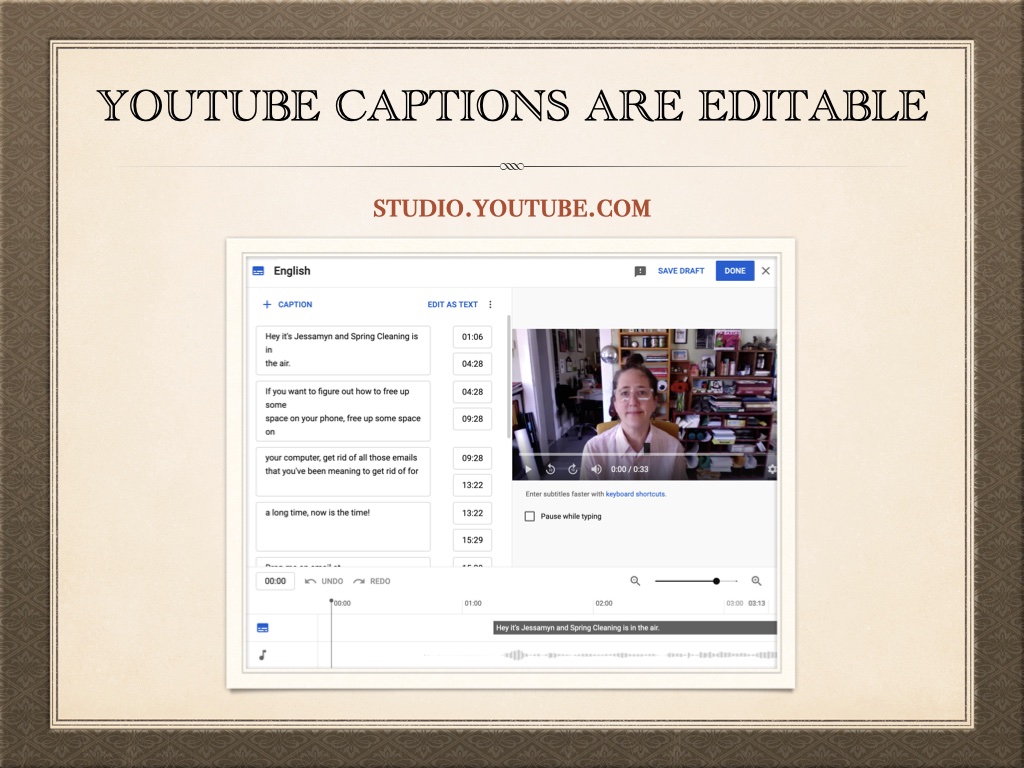
In terms of captions, YouTube can auto-generate captions which are of decent quality to start AND you can go in afterwards and make edits, correct spellings, and other parts of the transcript. This is good because, for example, YouTube's caption generator never knows how to spell my name even though it's right there in my username.
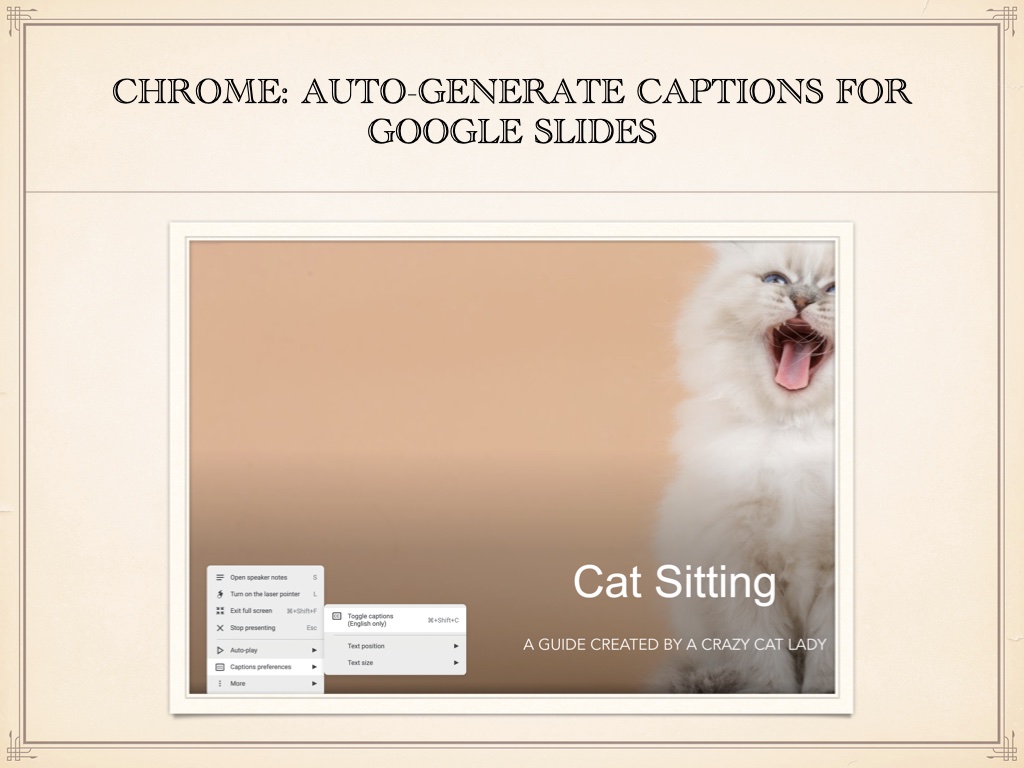
If you use Chrome there is a great feature which will allow you to provide captions as you deliver a Google Slides presentation. This is also using "live captioning" which makes it sound like "a live person might be captioning this" but really it's the same old AI. If you screen record your presentation the captions will be right there - open captions, baked in. I'll be honest I've messed around with this a little and had a hard time getting it to work right but friends of mine swear by it.
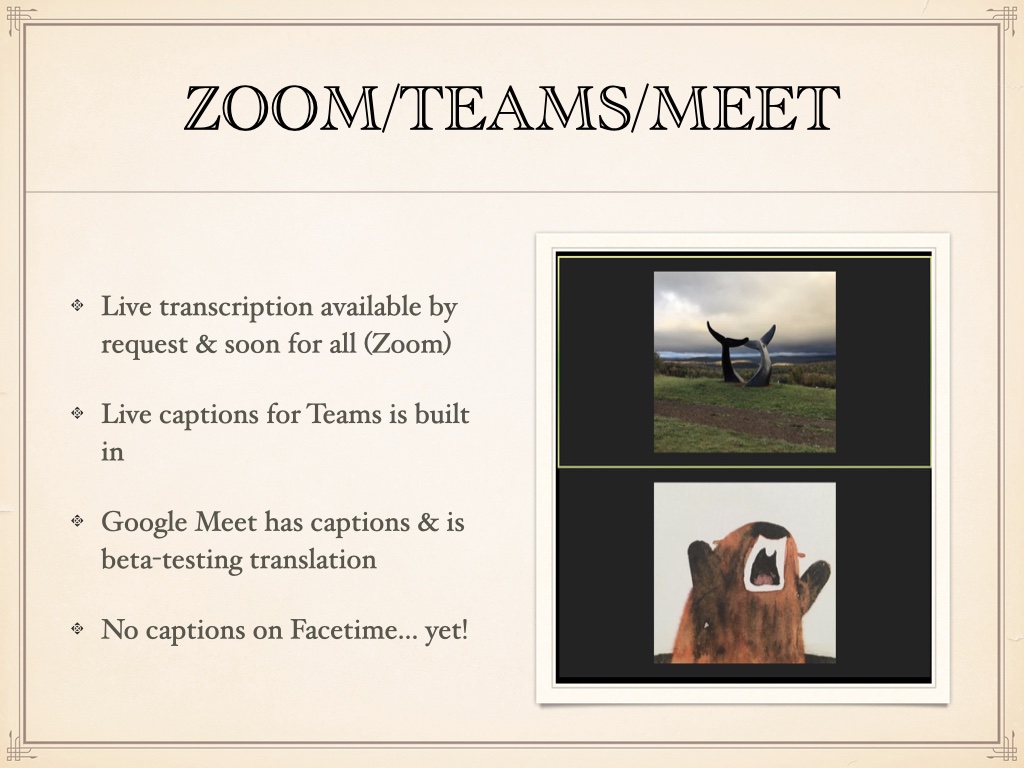
As far as events like this, there are options, most of them good. Zoom has captioning (finally) for all free and paid levels. It's fussy to set up and help files I made for my library to explain this (you have to set it up on the Zoom website and THEN you can enable it within the Zoom app - link to help files on the links page). Teams has captions built in. Google Meet not only has captions but they've got translated captions for some languages. I could be speaking and if my Spanish-speaking colleague was in the meeting, they might see my words translated into Spanish. I have not tried this. Facetime has nothing but iOS 16 should have a live caption beta. Speaking of mobile-tools, many of the things I am talking about--browser plug-ins and some web-based tools--rely on having a desktop or laptop computer and they don't all work on mobile.
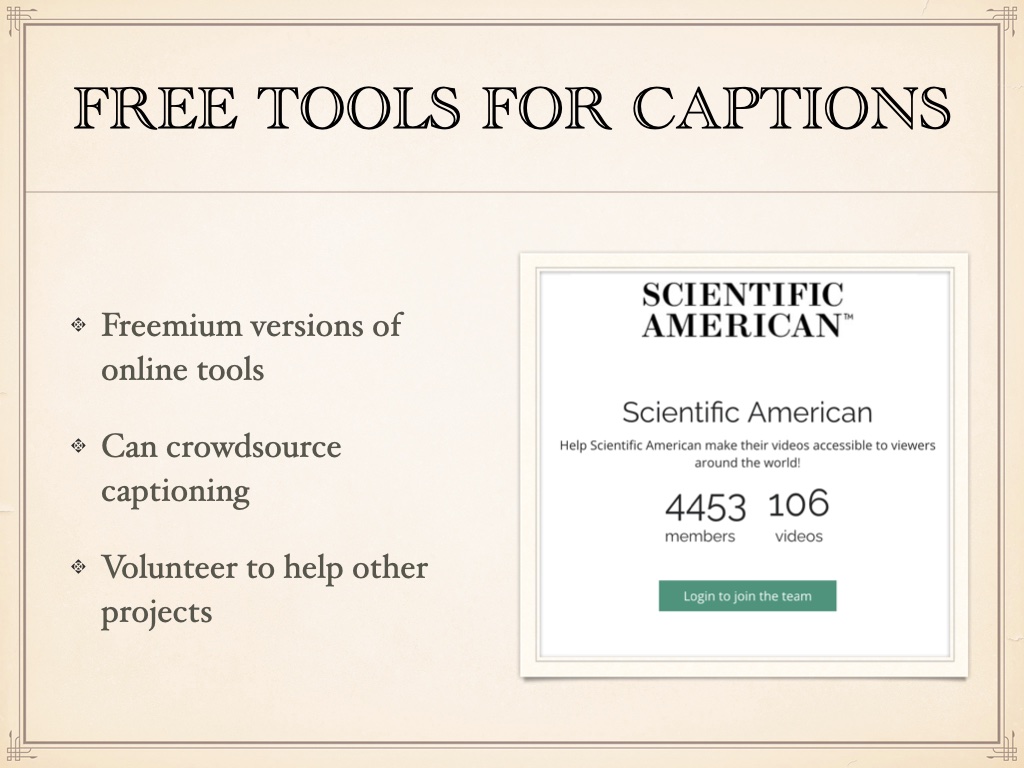
There are some great free captioning tools however, if you're not going the YouTube route. Amara is a great online tool where you can upload video and then have multiple people work on captions, you can even crowdsource captions for your videos like Scientific American does. It's free to use but if you want to keep your videos private and NOT have them available to the public, there's a fee-based version. WGBH, a local-to-me broadcaster has created an offline tool called CADET (Caption And Description Editing Tool) which is super powerful and straightforward to use. If you look at their videos on YouTube, ones that they've captioned, you can really tell the difference between user-generated captions and AI generated ones.
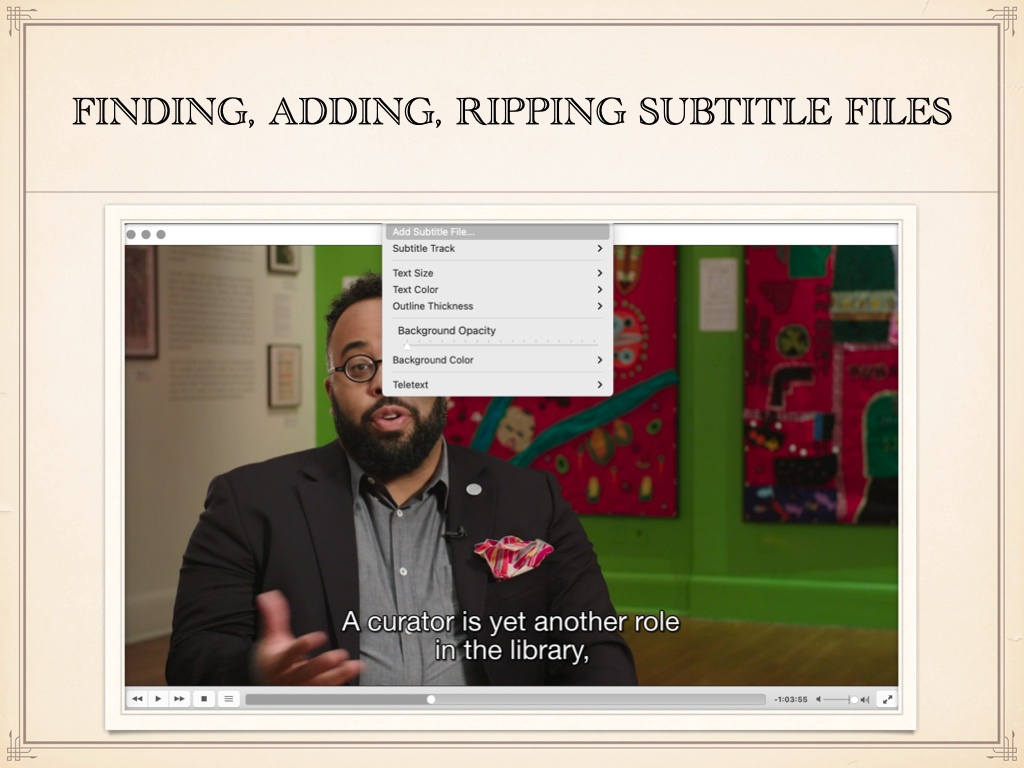
Or maybe you've got someone else's content and it doesn't have subtitles. .srt files are subtitle files that can be added to video content after the fact. You can add your own using the tools I've mentioned, or go find them on the open web using OpenSubtitles.com (or other sources - but that's a big one). There are HUGE fan communities that make sub files for things like English subs for anime originally in Japanese. Video players such as VLC will let you add a subtitle track to a video you've loaded. Here is a movie I saw called The Booksellers (recommended!). I found and added these subtitles (technically captions). You can also take content that has subtitles and rip the subtitles down to a text file to get an approximate transcript of video content. I do this a lot with CSPAN where maybe I want to know what happened but I don't want to watch a whole congressional hearing.
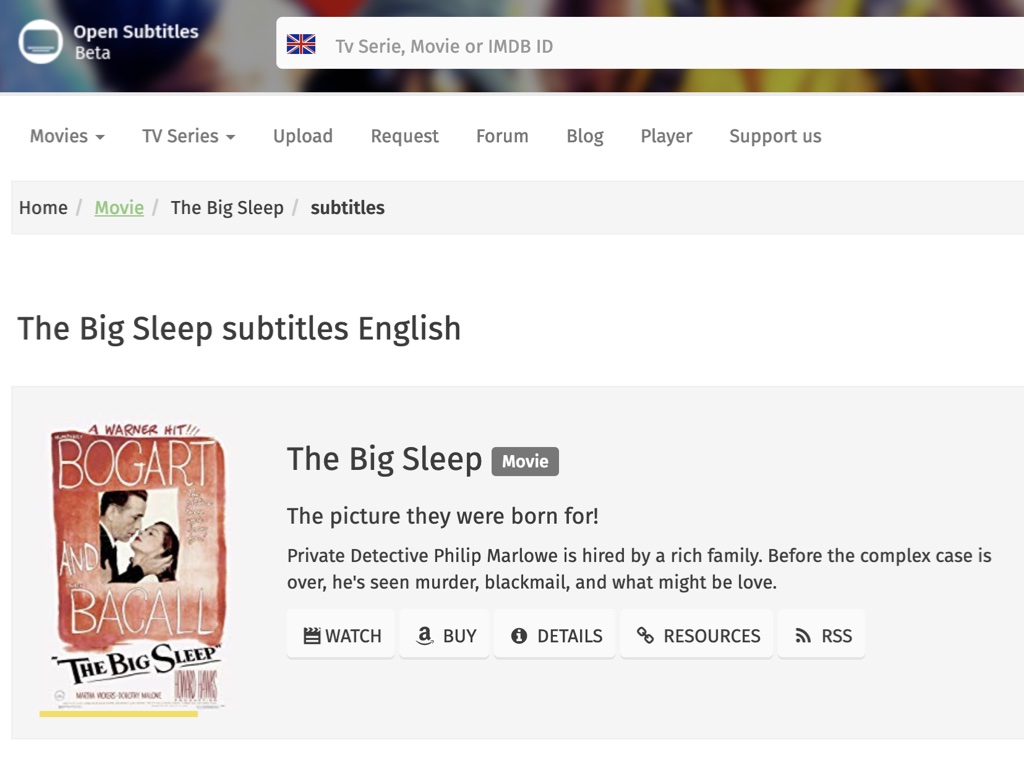
This is also true for older movies that may have been produced without subtitles originally. Grab those subtitles!
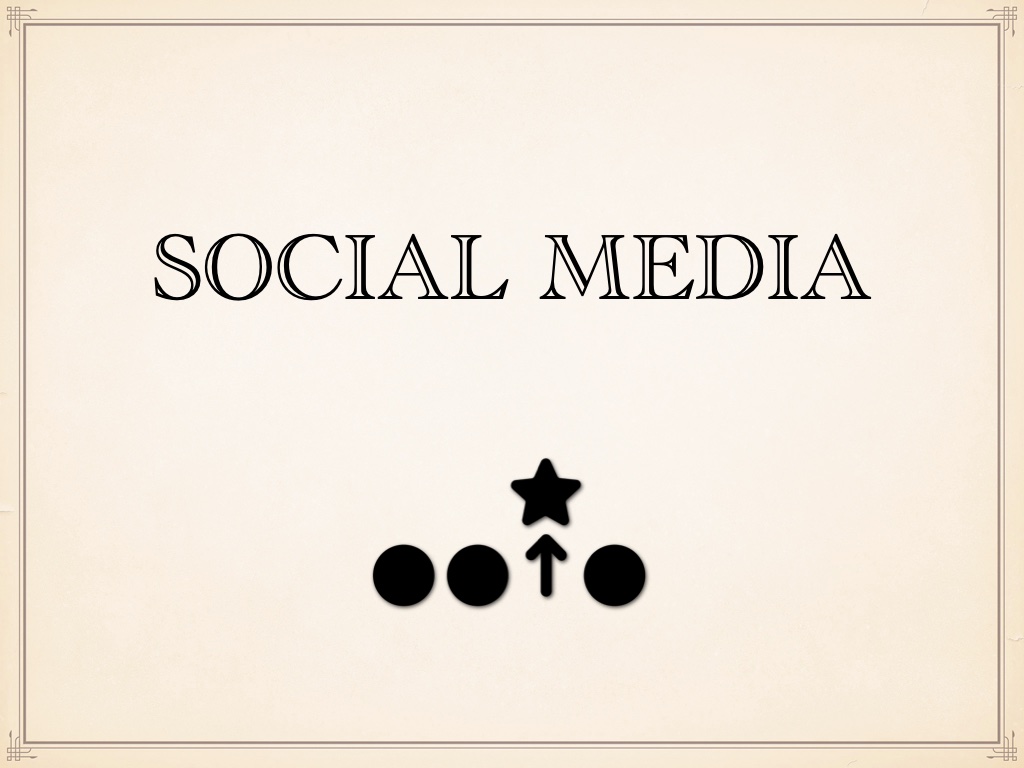
Social media is where I see people fail to use accessibility tools in places where I think it would benefit them the most and where the barrier to entry is incredibly low.
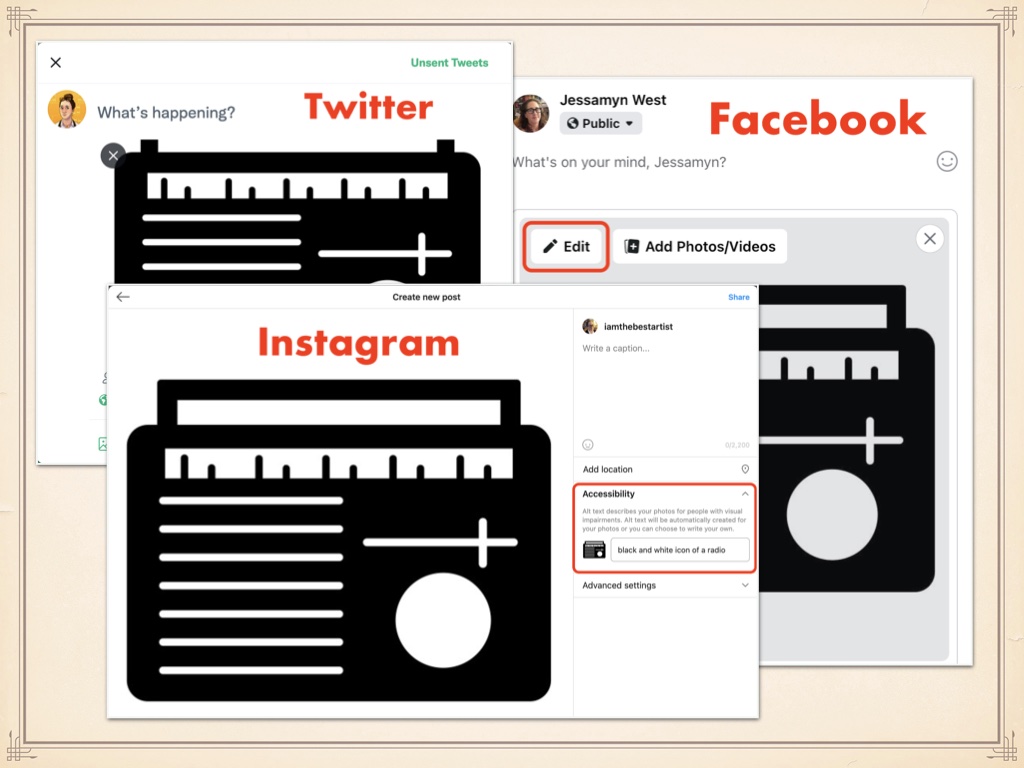
However, even though it's simple to type in alt text for an image, you have to FIND the text entry area first. Here is where to find a text entry box on three major social platforms. Two of these are even owned by the same company and they're still different! My links list has a few "how to" files which give advice on how to describe an image clearly and succinctly. Keep in mind that in an emotive space like social media your descriptions might be different than in a more "just the facts" kind of space.
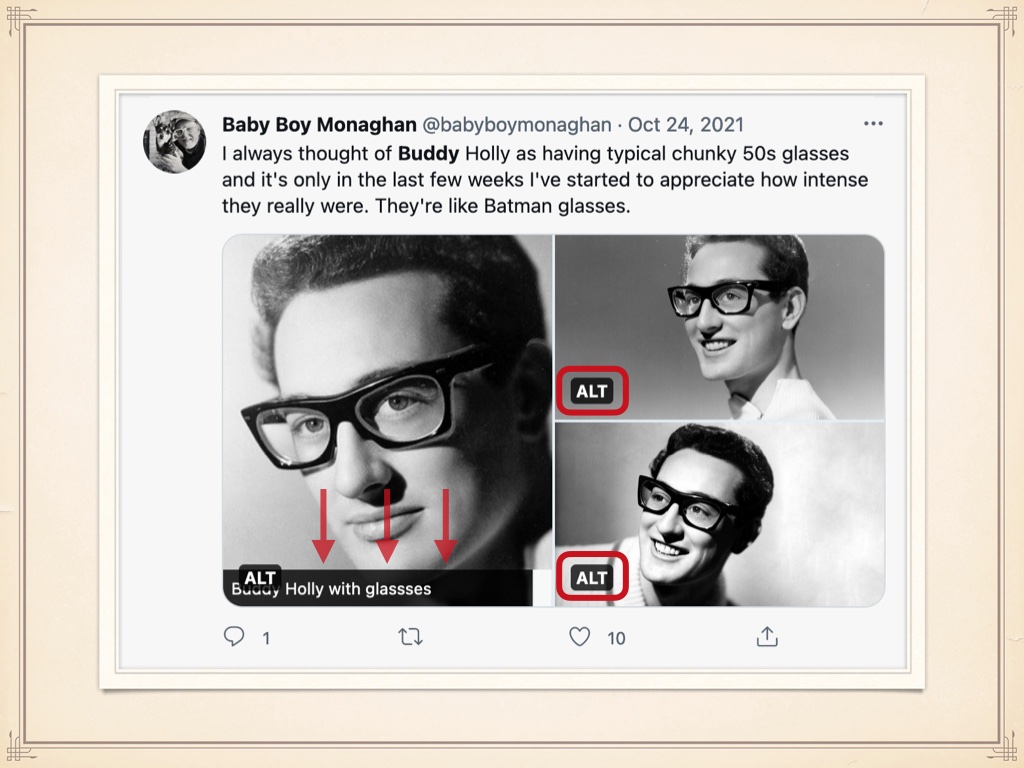
A few notes about alt text on twitter and other socials. You can't add it after the fact though twitter may be adding an edit feature which may change that. It's illuminating to be able to see others' alt text. Twitter FINALLY added the ability to see what other people have used for ALT text. It's also pretty easy to see when people aren't using it. I have a local politician who was running on an inclusivity platform and I reached out to her team because she wasn't using ALT text and her social media team started using it. Neat!
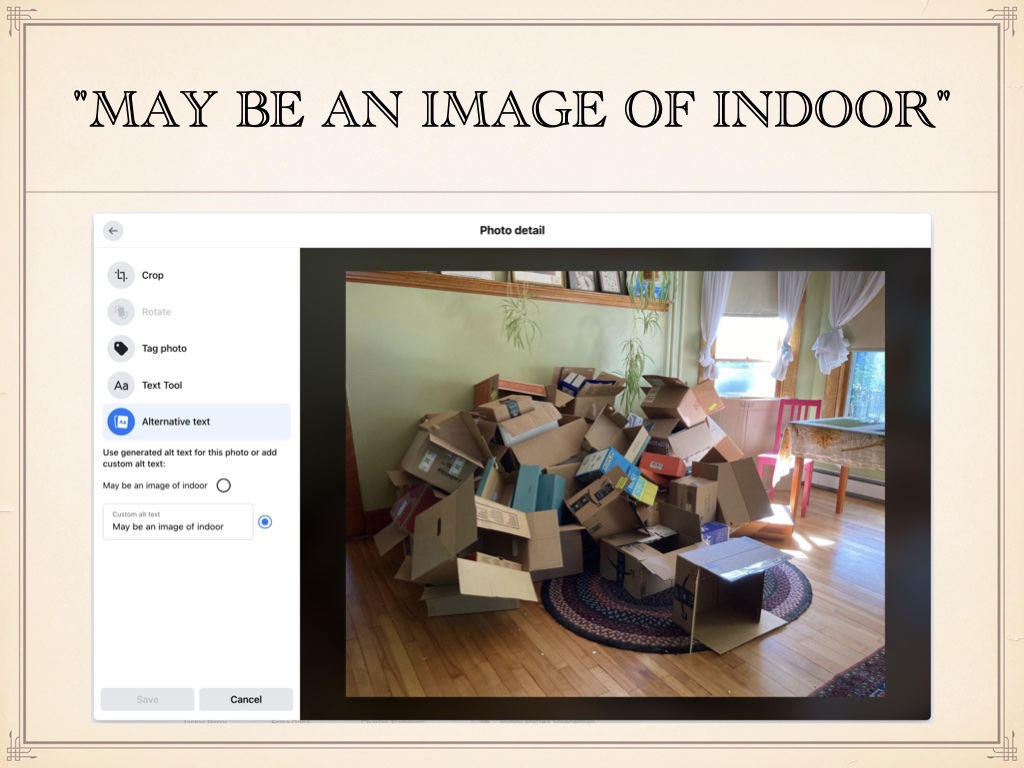
Unlike with video captions I highly suggest not using the supplied captions. They are not good.
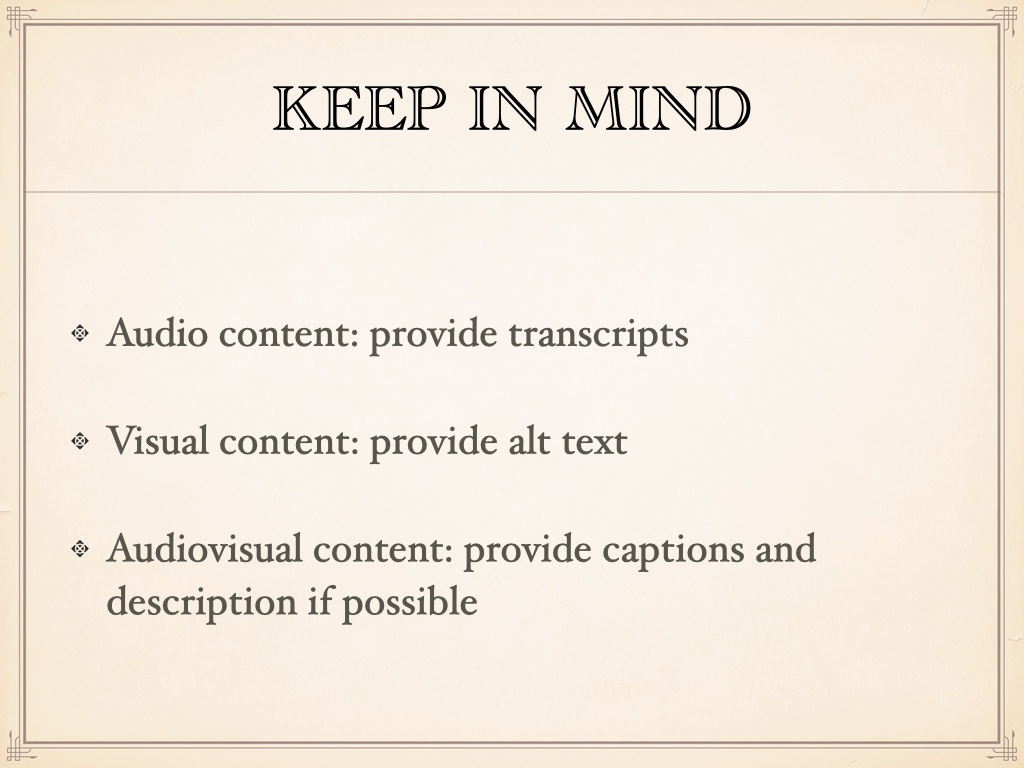
...
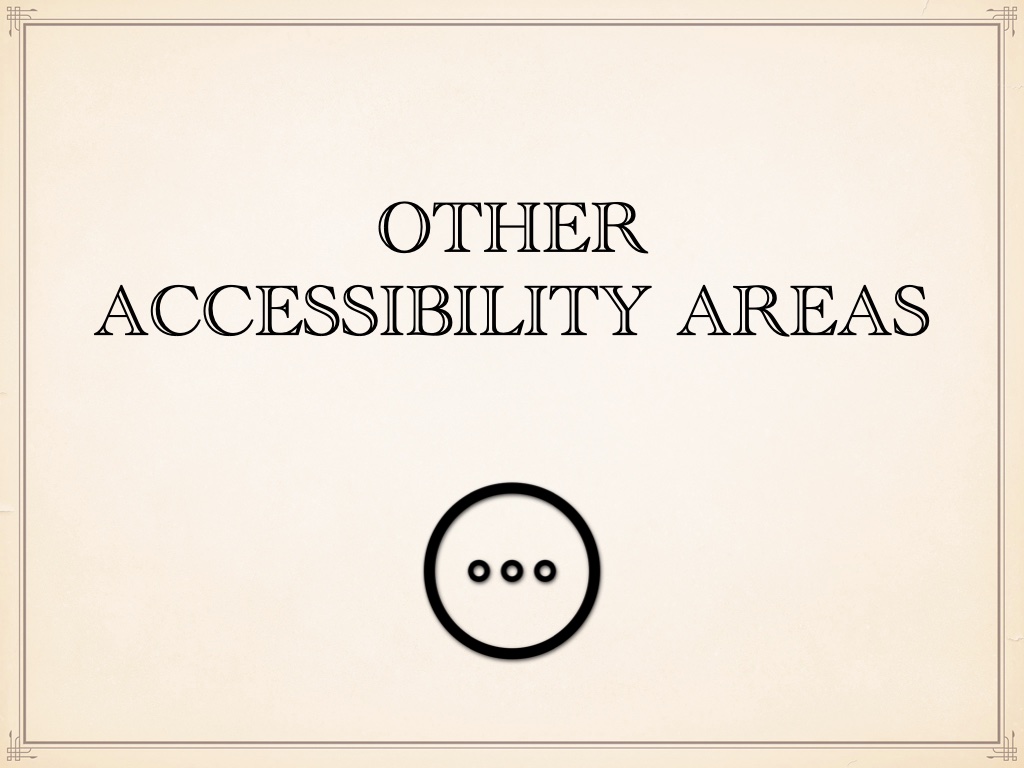
Social media is where I see people fail to use accessibility tools in places where I think it would benefit them the most and where the barrier to entry is incredibly low.
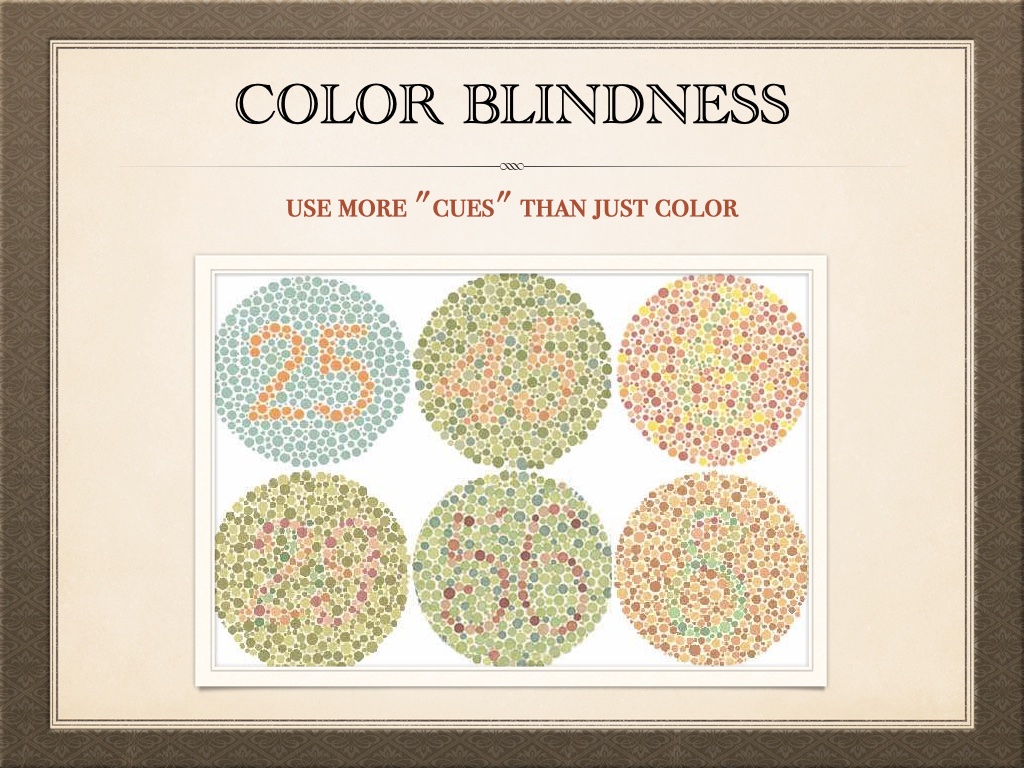
"it is not possible to predict what a color blind users sees with 100% accuracy." so make sure you're providing other options. If you have a graph or chart online, don't just add alt text but make sure it's understandable to people who can't see the difference in the colors.
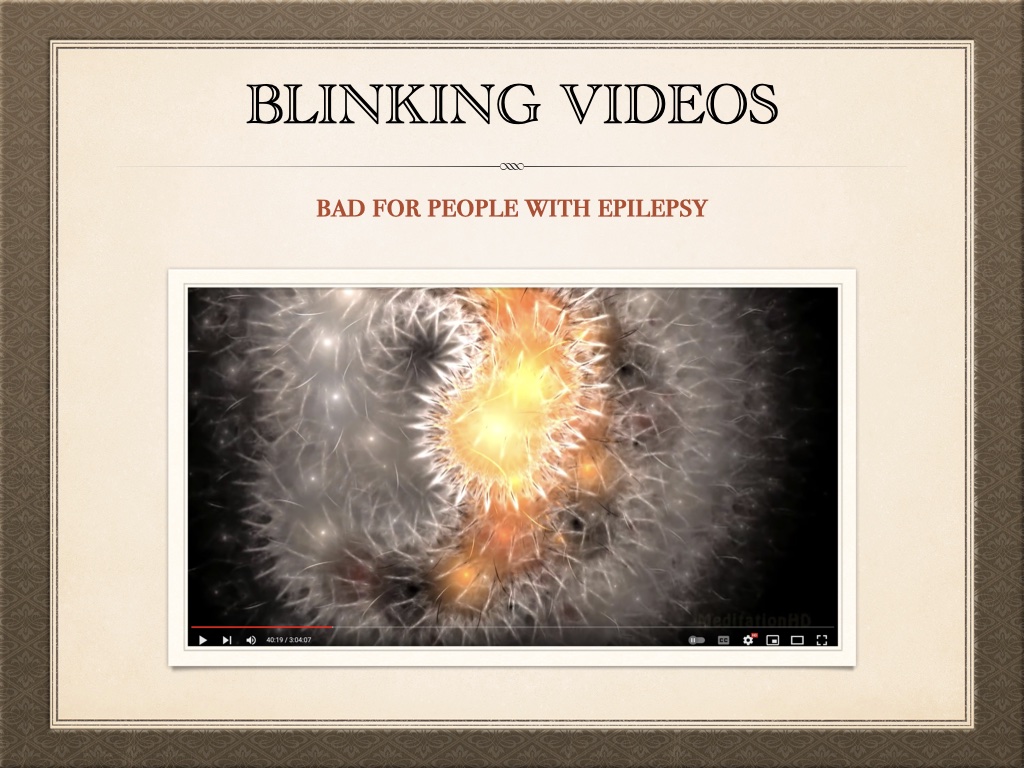
People say to avoid anything that flashes more than three times a second. I think it's worth thinking about whether any flashing content is strictly necessary.
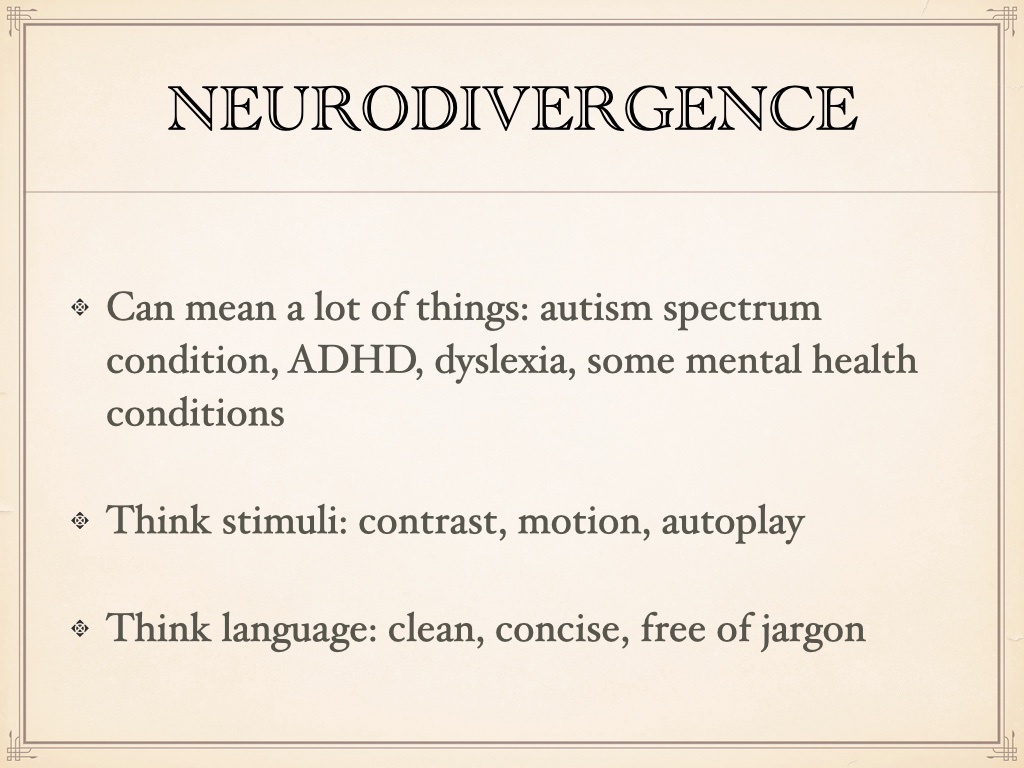
The saying goes "If you’ve met one person with autism, you've met one person with autism" so you can't make assumptions here but you can do targeted outreach and usability testing on your website with many different types of people.
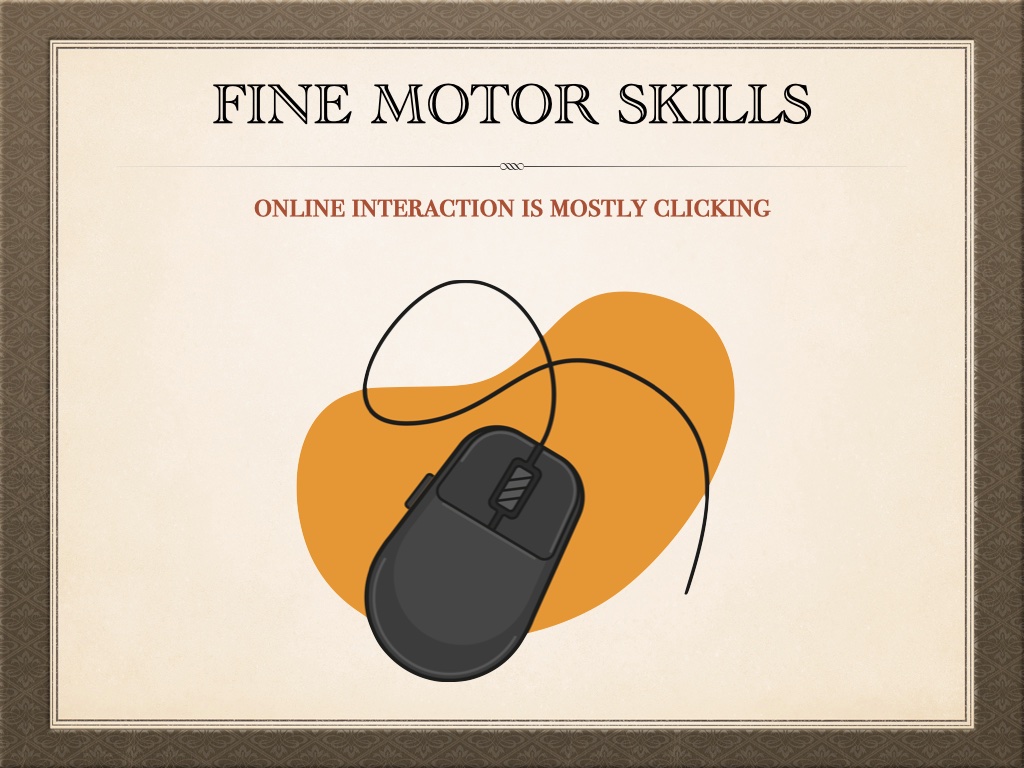
Lastly, be aware that while you can't do anything about other websites, you can do a lot about your own. Make sure content is easy to get to, doesn't require clicking on tiny targets or difficult menus or, if that's unavoidable, offer a site map as an alternative access point for people who may have trouble navigating.
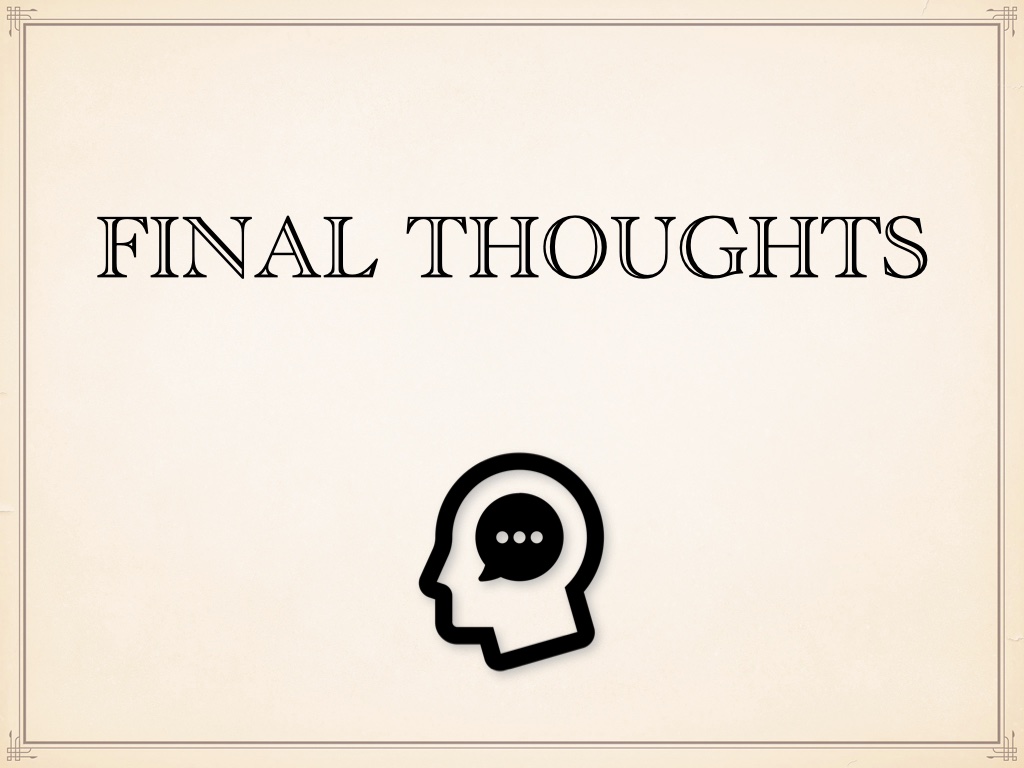
A few final thoughts about this.
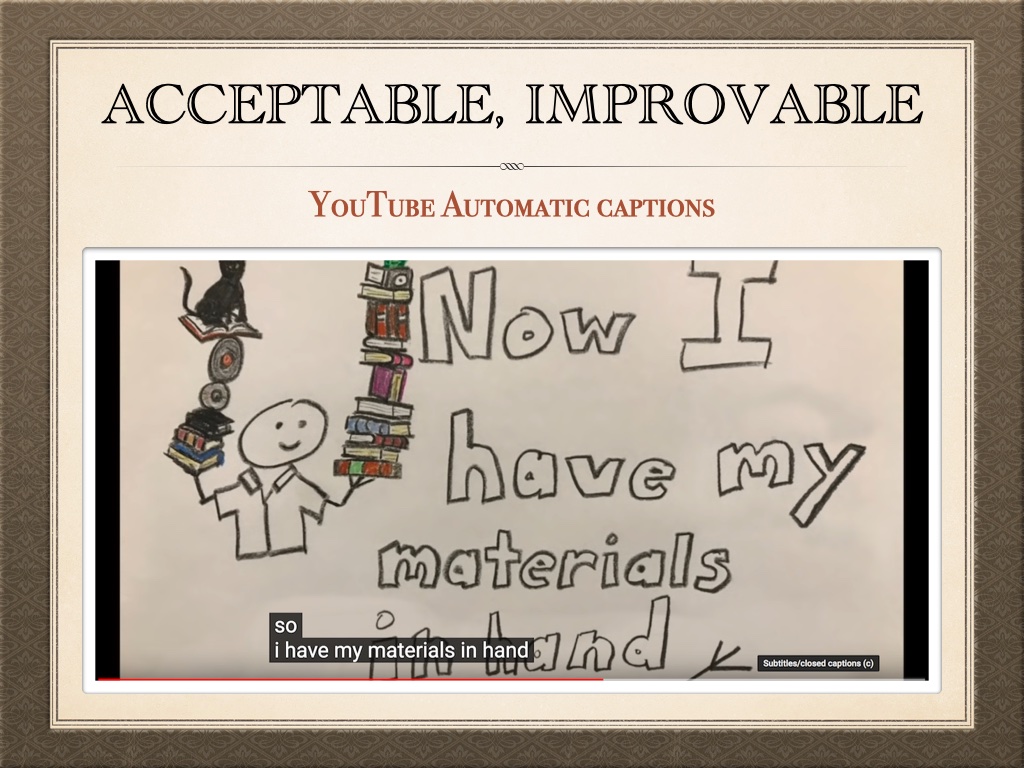
As I mentioned before YouTube's automatic captions are okay-not-great, but now you know how you can make them better. And this is the general thrust of this talk "You can make this okay-not-great stuff better" As I've said many many days during this pandemic "We'll get there" You don't need to do it all at once but you should be looking towards improvements, and taking feedback.
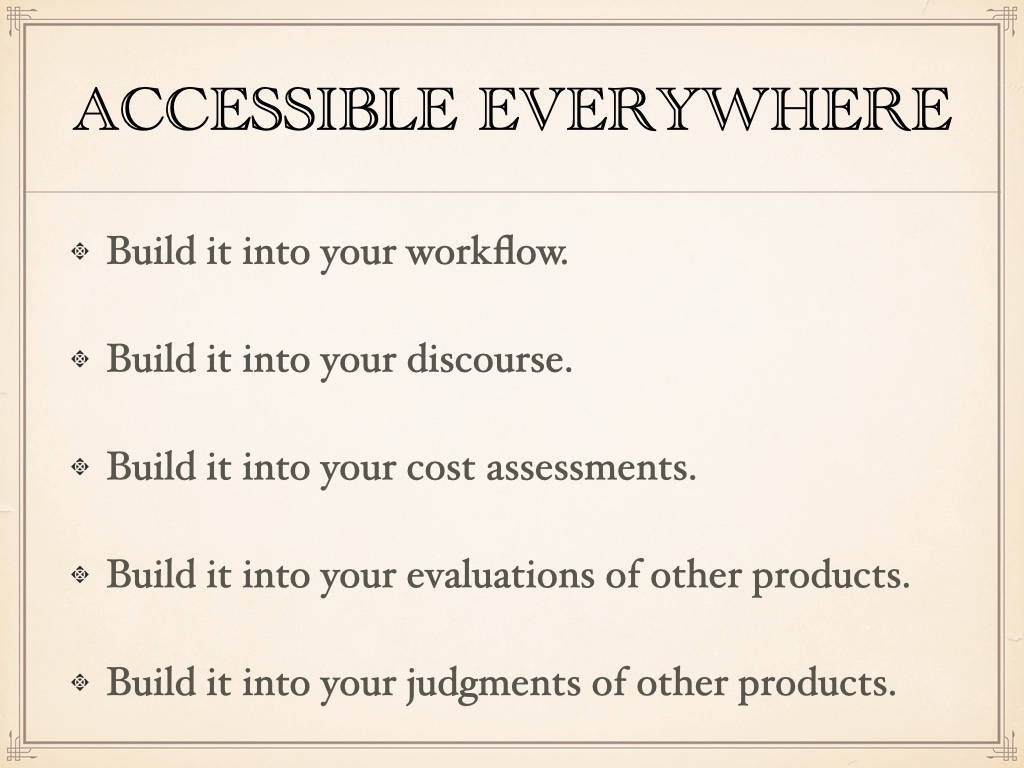
I was surprised when I started working on just bringing accessibility into my library and my own practice how few people prioritized it. To me it's kind of an obvious no-brainer for anyone working on inclusion topics. To that end, I encourage you to...
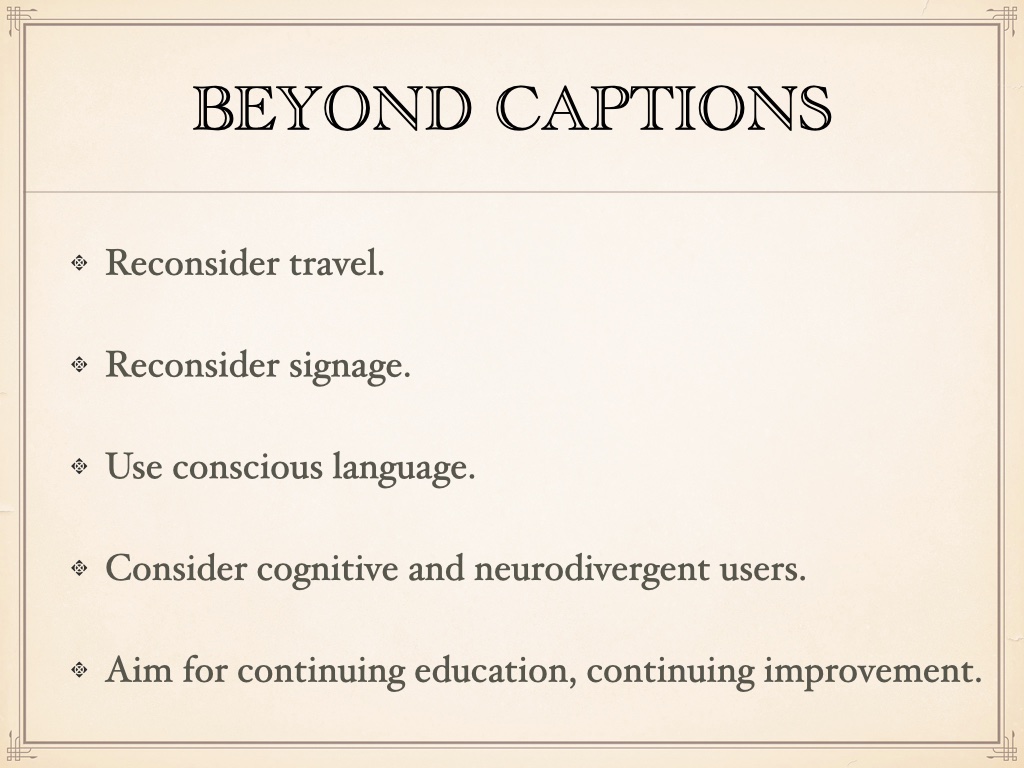
And thinking more along those lines, when we're thinking about accessibility....
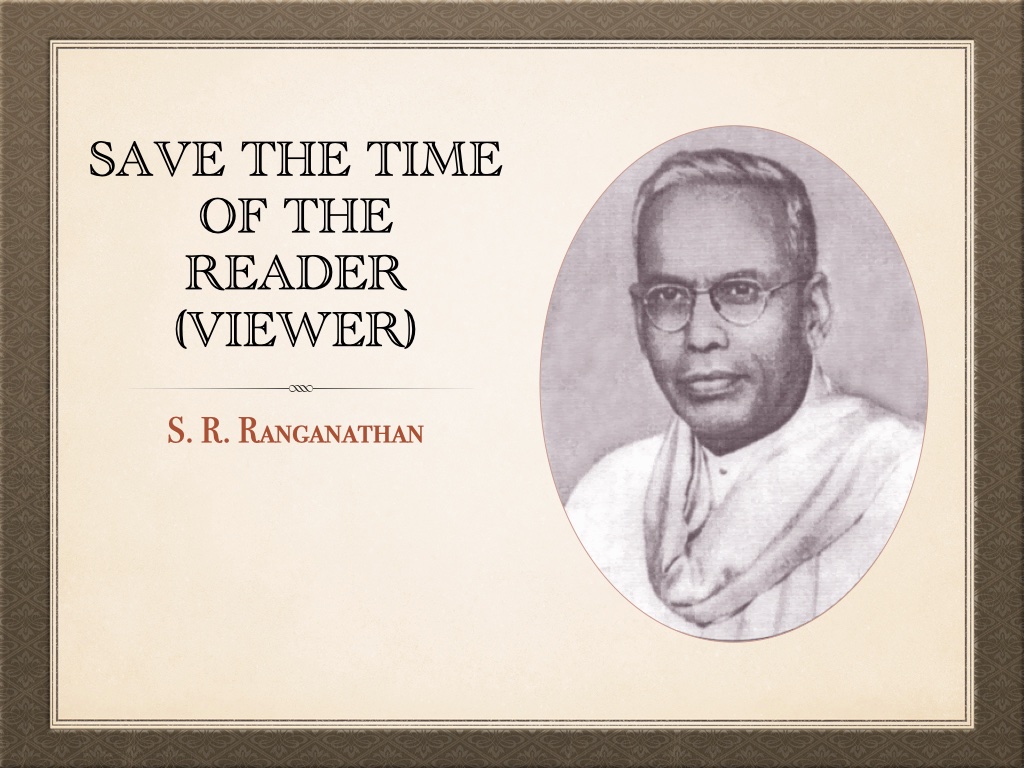
Obviously there are costs--time, money, effort--associated with this. However what we want to be doing is linking our users, patrons, viewers, potential customers, with content we want to share with them. Originally a statement addressing the open vs. closed stacks dilemma, this brief statement is an excellent summary of addressing accessibility needs. Ranganathan also said "The library is a growing organism" in that it should be changing and improving to meet the information needs of its service population. I think building accessibility into every part of our workflow is one great way to do this.
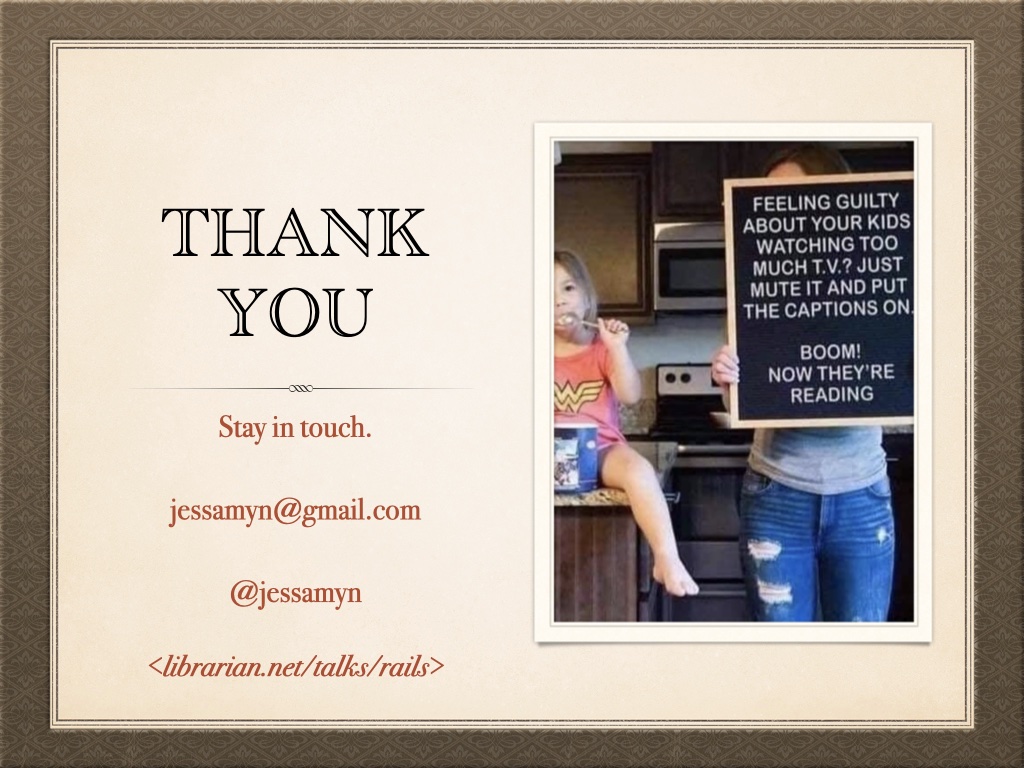
Appreciate your time and attention, please feel free to get in touch.